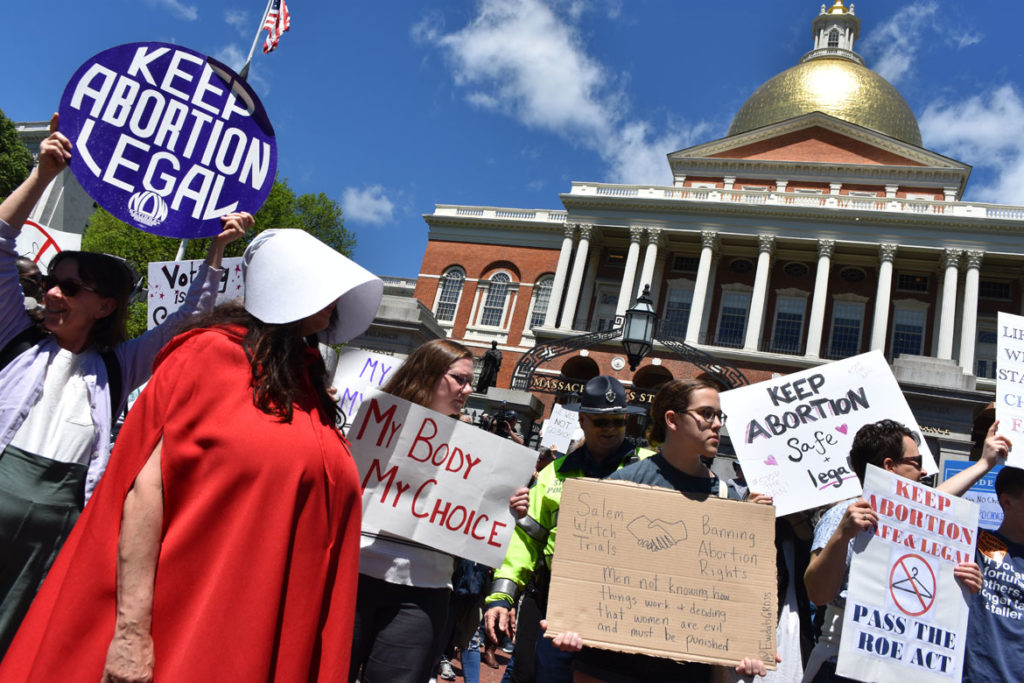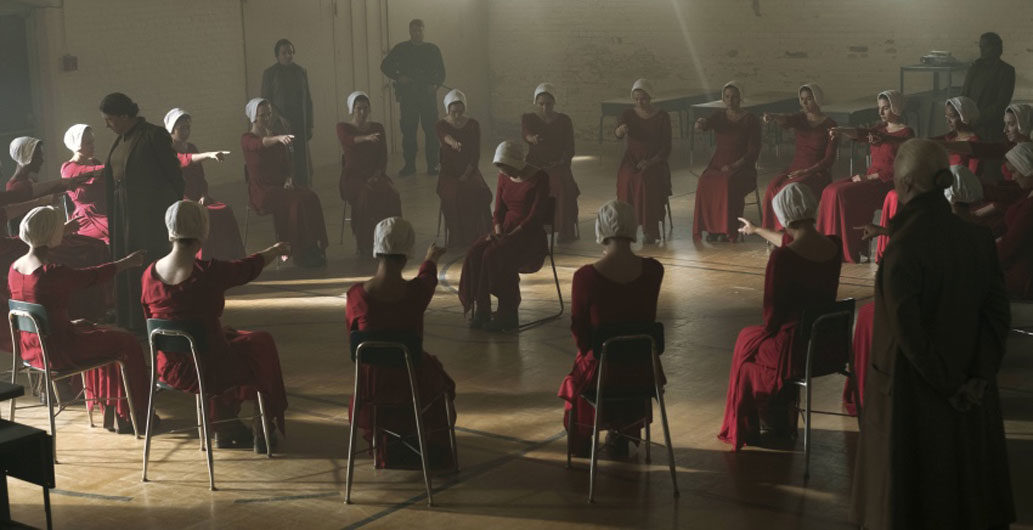Margaret Atwood was living in West Berlin in 1984, the city still divided by the Berlin Wall, when she began writing the story of Christian fundamentalists who assassinate the president to reshape American society to repress women, the story of Offred, a woman trapped in this misogynist dystopia.
It became Atwood’s 1985 novel “The Handmaid’s Tale.” “The immediate location of the book,” she wrote in The New York Times in 2017, “is Cambridge, Mass., home of Harvard University, now a leading liberal educational institution but once a Puritan theological seminary.”
I decided to track down the story’s settings. Significant portions of the book recount the characters walking Cambridge. So I assembled this walking tour below, following in the footsteps of the fictional Offred around Cambridge’s real Harvard Square and surrounding communities: “I open the front gate and close it behind me, looking down but not back. The sidewalk is red brick.”
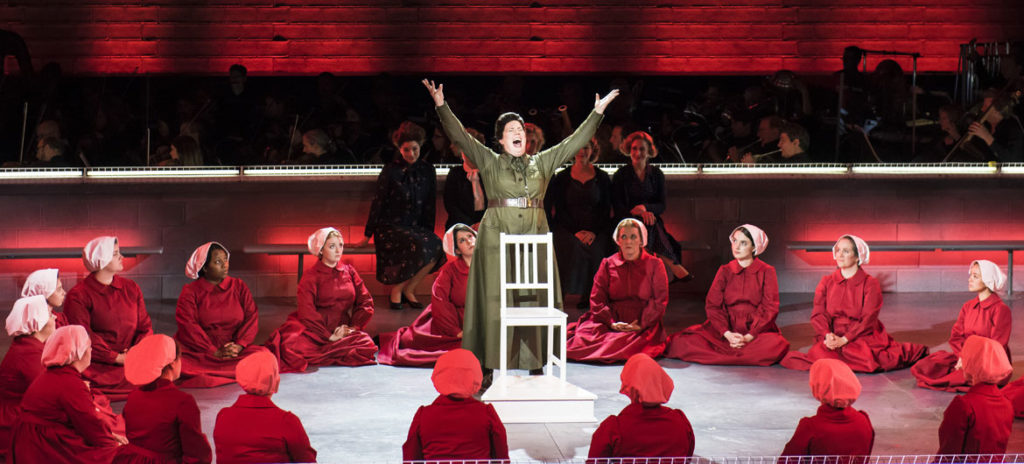
“The Handmaid’s Tale” has become a sensation since its adaption as a Hulu television series (pictured at top), which debuted in 2017. The third season is scheduled to debut on June 5, 2019.
And Boston Lyric Opera is performing an opera adaptation of the book, written by Danish composer Poul Ruders and librettist Paul Bentley in 2000, with newly revised orchestration commissioned by the Boston company, on Friday, May 10, at 7:30 p.m. and Sunday, May 12, at 3 p.m. They’re staging it at Harvard’s Lavietes Pavilion in Allston, “a basketball gymnasium that recalls the book’s fictional ‘Red Center’ [re-education facility] and numerous other locations.”
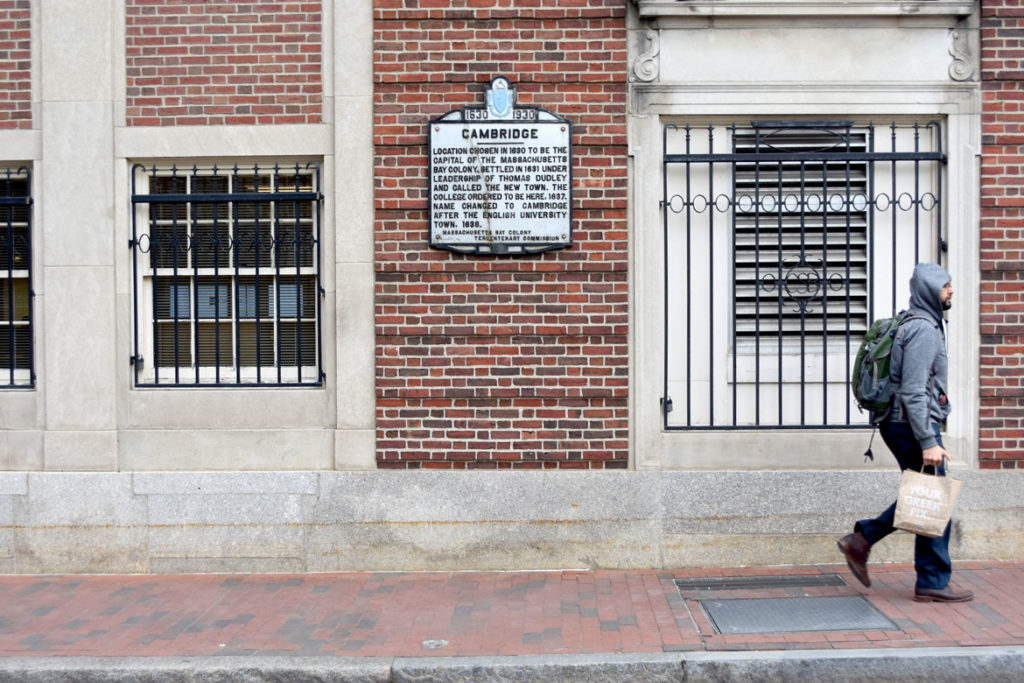
“In a way, ‘The Handmaid’s Tale’ is my book about my [Amerian Puritan] ancestors,” Atwood wrote in her essay “Writing Utopia” about the origins of “The Handmaid’s Tale” in her 2005 nonfiction collection “Writing With Intent.”
Atwood did graduate studies at Radcliffe College in 1962—including research into “my New England ancestors as well as the Salem witchcraft trials.” Her English forebearers settled in Massachusetts and New Hampshire until the American Revolution, when they sided with the Loyalists. When that didn’t work out so well, they went into exile in Nova Scotia.
“You often hear in North America, ‘It can’t happen here,’ but it happened quite early on,” Atwood told The New York Times in 1986. “The Puritans banished people who didn’t agree with them. So we would be rather smug to assume that the seeds are not there. That’s why I set the book in Cambridge.”
“People think of Harvard as the home of liberal democracy, but in fact in the 17th century it was the home of a theocracy, so I thought it would be salutary to set it here, and anyway it was funny,” Atwood told The Harvard Crimson in 2013. “Harvard was not originally amused by it. They were not amused by the bodies hanging on the Harvard wall. They were a bit sniffy about it when they reviewed it. They’ve come ’round. They’ve come ’round.”
If this is the kind of coverage of arts, cultures and activisms you appreciate, please support Wonderland by contributing to Wonderland on Patreon. And sign up for our free, weekly newsletter so that you don’t miss any of our reporting.
“The Handmaid’s Tale” Walking Tour
Begin at
Harvard Square MBTA Station, 1440 Massachusetts Ave.: “I don’t go over the river anymore, or over bridges. Or on the subway, although there’s a station right there. We’re not allowed on … there’s no official reason for us to go down those steps, ride on the trains under the river, into the main city.” (page 31. Note: Page numbers refer to the circa 2017 paperback edition published by Anchor Books.)

Turn left onto Massachusets Avenue/Brattle Street. At the split, stay right onto Brattle Street, then right again onto Brattle Street:
The former site of Bailey’s, 21 Brattle St.: “There used to be an ice cream store, somewhere on this block. I can’t remember the name. Things can change so quickly, buildings can be torn down or turned into something else, it’s hard to keep them straight in your mind the way they used to be. You could get double scoops…” (page p. 165)
Further up Brattle Street:

Brattle Theatre, 40 Brattle St.: “In front of us, to the right, is the store where we order dresses. … Lilies of the Field, it’s called. … Lilies used to be a movie theater, before. Students went there a lot; every spring they had a Humphrey Bogart festival, with Lauren Bacall or Katherine Hepburn, women on their own, making up their minds. … I don’t know when they stopped having the festival. I must have been grown up. So I didn’t notice.” (pages 24-25)
Atwood told The Los Angels Times in 1990 that “the grim, monastic clothes store, Lilies of the Field, placed in what had been, in pre-revolutionary times, Cambridge’s beloved repertoire movie house, the Brattle Theatre.”
Return the way you came on Brattle Street. Turn right onto Eliot Street. Head into the pedestrian path through the Harvard buildings, continuing toward the Charles River. Cut across the park toward the intersection of Memorial Drive and John F. Kennedy Street.
Weld Boathouse, 971 Memorial Drive, Cambridge; Football Stadium, 79 North Harvard St., Allston: “To the right, if you could walk along, there’s a street that would take you down towards the river. There’s a boathouse, where they kept sculls once, and some bridges; trees, green banks, where you could sit and watch the water … On the way to the river are the old dormitories, used for something else now, with their fairy-tale turrets, painted white and gold and blue. … The football stadium is that way too, where they hold the Men’s Salvagings. As well as he football games.” (page 30)
Head away from the river and back toward Harvard Square along John F. Kennedy Street. On the left, at the corner with Eliot Street, you’ll find:

Harvard Kennedy School, 79 John F. Kennedy St.: “After a while we turn right, heading past Lilies and down towards the river. I wish I could go that far, to where the wide banks are, where we used to lie in the sun, where the bridges arch over. … We turn in at a more modern building, a huge banner draped over its door—WOMEN’S PRAYVAGANZA TODAY. The banner covers the building’s former name, some dead president they shot.” (page 213)
Continue up John F. Kennedy Street toward Harvard Square. At the Square, turn left onto Massachusetts Avenue. At the first intersection, find:
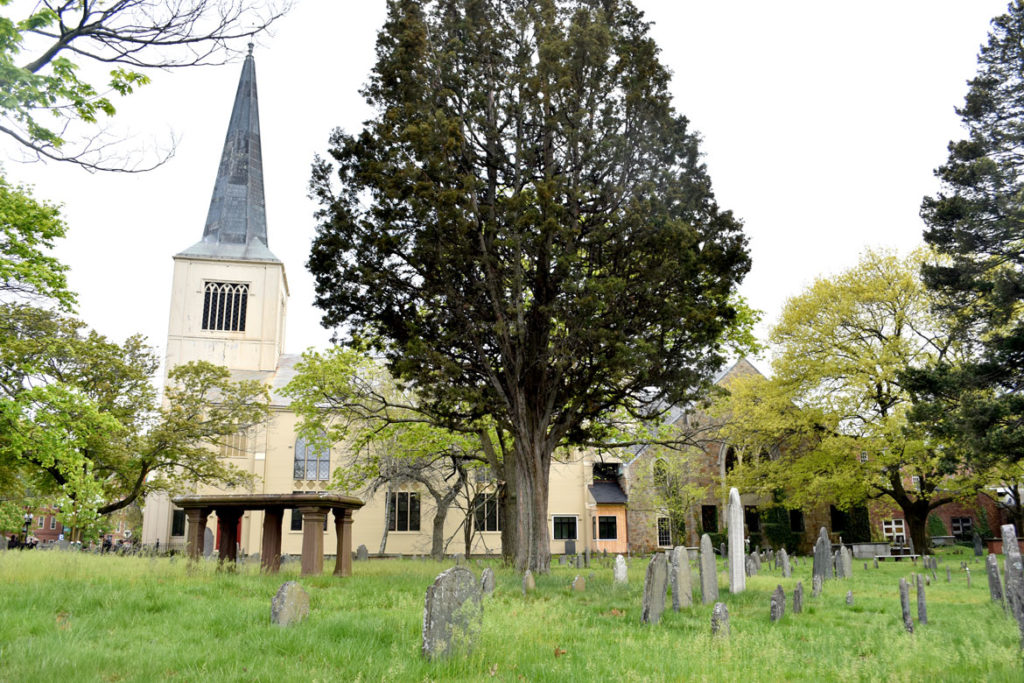
First Parish in Cambridge Unitarian Universalist, 3 Church St.: “The church is a small one, one of the first erected here, hundreds of years ago. It isn’t used any more, except as a museum. … We don’t go in, though, but stand on the path, looking at the churchyard. The old gravestones are still there, weathered, eroding, with their skulls and crossed bones, memento mori…” (page 31)
Cross Massachusetts Avenue to Harvard Yard and the ornate gate:
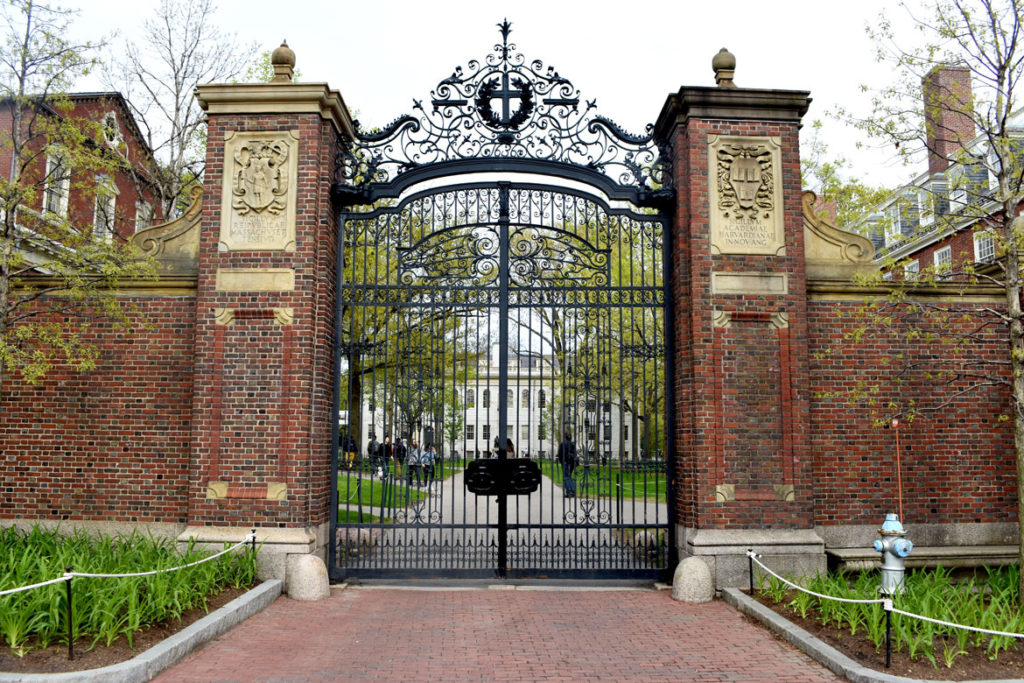
Harvard Yard, Harvard Square: “I had some sort of an idea where I was in relation to the city, though I was walking along a street I couldn’t remember having seen before. … I thought I might as well head that way, see if I could find the Yard or the Square or anything around it,” Moira tells Offred. (page 244)
Harvard University: “Doctors lived here once, lawyers, university professors. There are no lawyers anymore, and the university is closed.” (page 23)
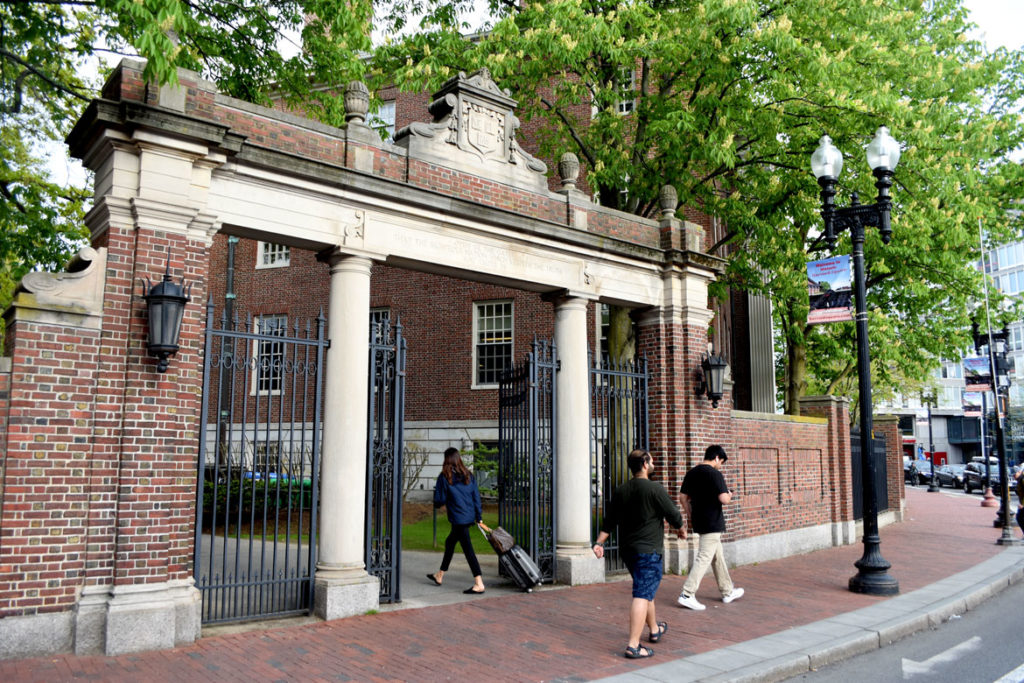
Harvard Yard: “Now we turn our backs on the church and there is the thing we’ve in truth come to see: the Wall. / The Wall is hundreds of years old too; or over a hundred, at least. Like the sidewalks, it’s red brick, and must once have been plain but handsome. Now he gates have sentries and there are ugly new floodlights mounted on metal posts above it, and barbed wire along the bottom and broken glass set in concrete along the top.” (page 31)
“’Let’s go around,’ she says. She means down, towards the river. We haven’t been that way for a while. / ‘Fine,’ I say. I don’t turn at once though, but remain standing where I am, taking a last look at the Wall. There are the red bricks, there are the searchlights, there’s the barbed wire, there are the hooks. Somehow the Wall is even more foreboding when it’s empty like this. When there’s someone hanging on it at least you know the worst.” (page p. 165)
Atwood wrote in The New York Times in March 2017, “Would some people be affronted by the use of the Harvard wall as a display area for the bodies of the executed? (They were.)”
Cross the Yard northward, exiting the Yard onto the Cambridge Street pedestrian plaza.
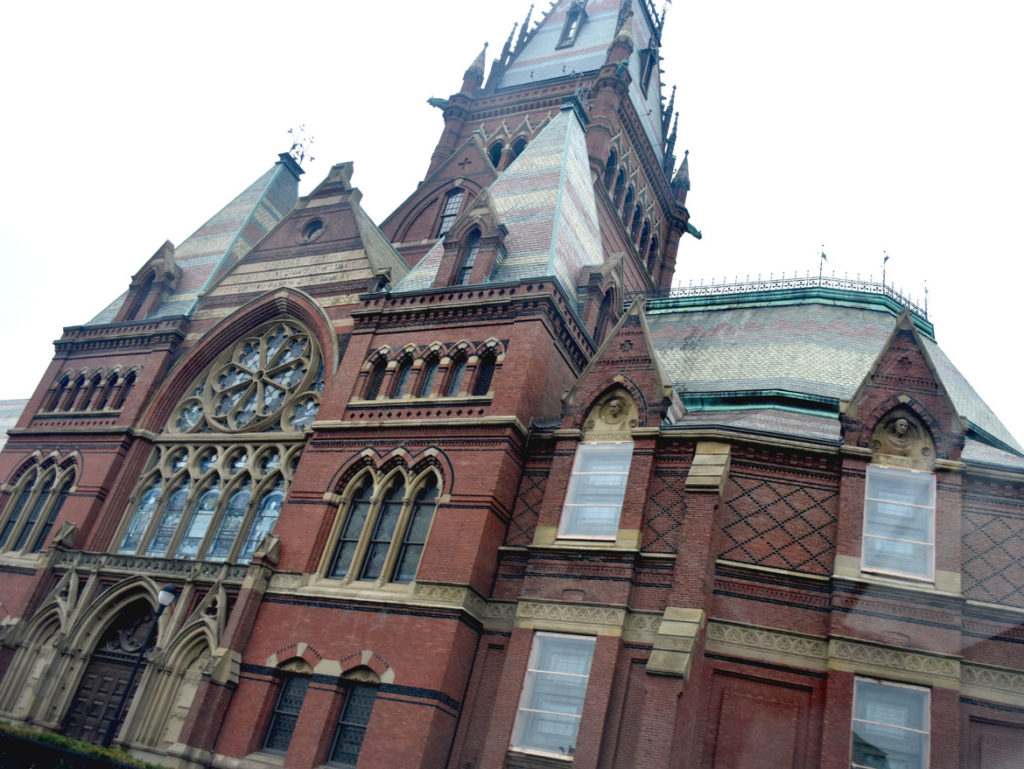
Memorial Hall, 45 Quincy St.: “Today we turn in the opposite direction from Soul Scrolls, to where there’s an open park of sorts, with a large old building on it; ornate late Victorian, with stained glass. It used to be called Memorial Hall, though I never knew what it was a memorial for. Dead people of some kind. … We stand looking at this building, which is in shape more or less like a church, a cathedral. Ofglen says, ‘I hear that’s where the Eyes hold their banquets.’” (page 201-202)
Reverse course. Head back into Harvard Yard toward:

Widener Library in Harvard Yard: “I can remember where the buildings are, inside the Wall; we used to be able to walk freely there, when it was a university. We still go there once in a while, for Women’s Salvagings. Most of the buildings are red brick too; some have arched doorways, a Romanesque effect, from the nineteenth century. We weren’t allowed inside the buildings anymore; but who would want to go in? Those buildings belong to the Eyes. / Maybe he’s in the Library. Somewhere in the vaults. The stacks. / The Library is like a temple. There’s a long flight of white steps, leading to the rank of doors. Then, inside, another white staircase going up. To either side of it, on the wall, there are angels. Also there are men fighting, or about to fight, looking clean and noble … Victory is on one side of the inner door, leading them on, and Death is on the other. It’s a mural in honor of some war or other. … Death is a beautiful woman, with wings and one breast almost bare; or is that Victory? I can’t remember.” (page 166)
“The Secret Service of Gilead is located in the Widener Library, where I had spent many hours in the stacks, researching my New England ancestors as well as the Salem witchcraft trials,” Atwood wrote in The New York Times in March 2017. Her description of the murals recalls John Singer Sargent’s 1922 murals “Entering the War” and “Death and Victory” inside the library that honor World War I soldiers.
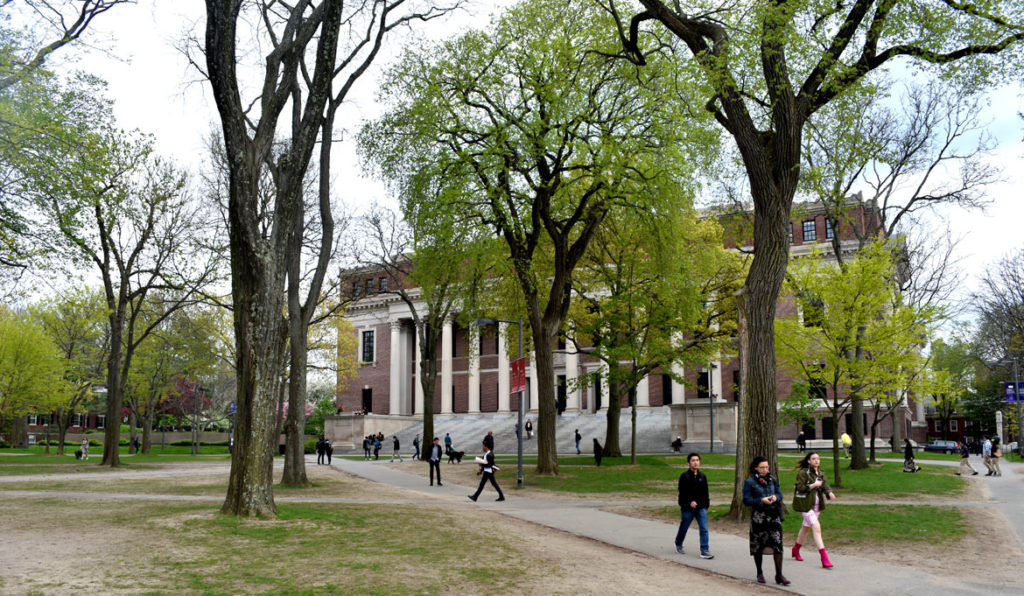
Widener Library in Harvard Yard: A Salvaging (hanging): “To the tolling of the bell we walk along the paths once used by students, past buildings that were once lecture halls and dormitories. It’s very strange to be in here again. From the outside you can’t tell anything’s changed, except that the blinds on most of the windows are drawn down. Those buildings belong to the Eyes now. / We file onto the wide lawn in front of what used to be the library. The wide steps going up are still the same, the main entrance is unaltered. There’s a wooden stage erected on the lawn, something like the one they used every spring, for commencement…” (page 272)
“The grounds in front of Harvard’s Widener Library is where they have public hangings,” Atwood told The Los Angels times in 1990.
Exit Harvard Yard onto Massachusetts Avenue, ending your tour back at the Harvard Square MBTA station.
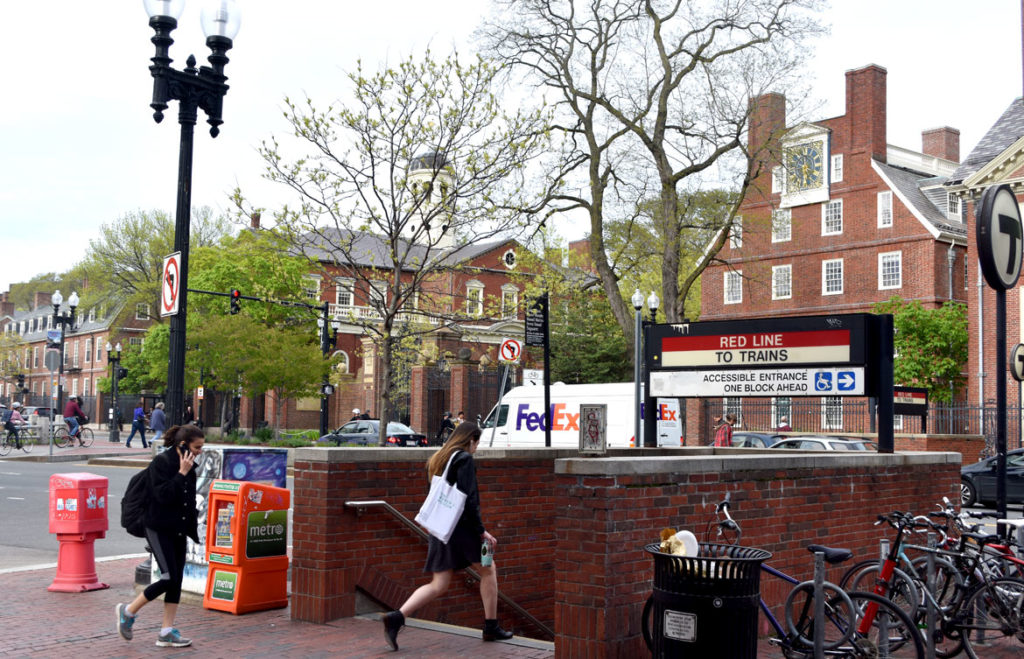
Additional sites:
A high school serves as the re-education facility known as the Red Center: The re-education facility known as the Red Center: “In the afternoons we lay on our beds for an hour in the gymnasium…” (page 70) “But on the fourth day she [Moira] was beside me during the walk, two by two around the football field.” (page 71) “The high school is old, the [washroom] stalls are wooden, some kind of chipboard.” (page 73)
Hmm. The closest high school to Harvard Square is Cambridge Rindge and Latin School at 459 Broadway, but there’s no football field there.
Visiting Jezebel’s (brothel): “We’re in an alleyway behind a building, red brick and fairly modern. … Inside it there’s a concrete-block corridor … We emerge into a central courtyard. It’s wide and also high: it goes up several stories to a skylight at the top. There’s a fountain in the middle of it, a round fountain spraying water in the shape of a dandelion gone to seed. Potted plants and trees sprout here and there, vines hang down the walls like giant mollusks. … I’ve been here before … It was a hotel then. Now it’s fully of women.” (page: 233-234) “We ascend in the glass half egg of the elevator, past the vine-draped balconies.” (page 250)
Rachel Greenhaus, in a blog post titled “The Handmaid’s Guide to Cambridge,” speculates that the Hyatt Regency Cambridge, 575 Memorial Drive, was Atwood’s inspiration for Jezebel’s.
Across the River: “My mother … lived across the river, in Boston.” (page 178)
Blue Hills: Ofglen tells Offred, “They’ve defeated more of the rebels, since yesterday. … Baptists. They had a stronghold in the Blue Hills. They smoked them out.” (page 20)
Salem and Maine: Moira tells of escaping via a Quaker underground: “By this time I’d hit Mass. Ave. and I knew where I was. … I almost made I out. They got me up as far as Salem, then in a truck full of chickens to Maine.” (page 247)
If this is the kind of coverage of arts, cultures and activisms you appreciate, please support Wonderland by contributing to Wonderland on Patreon. And sign up for our free, weekly newsletter so that you don’t miss any of our reporting.
